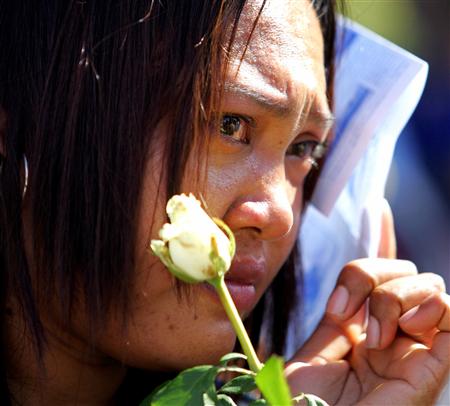Paradoxically and simultaneously, industrial unionism–though born
of the radicalism of Toledo, Minneapolis, and San Francisco–became
a new mode of enforcing the contract. Attempts to seize back the
initiative from foremen and time-study experts were met, now, with
directives from industrial union leaders to stay in line until a
greivance could be properly negotiated. Soon, union dues would be
deducted automatically from wages, so that officials no longer
needed to bother making personal contact and monthly appeals to the
loyalty of members.
Meany, treating industrial unionists at large as enemies, could not
for many years grasp that events were bringing the CIO’s elected
officials closer to him. He was steeped in a craft tradition to
which the very idea of workers united into a single, roughly
roughly egalitarian body hinted at revolutionary transformation.
But many less conservative sectors were equally surprised by the
course of the more democratic CIO unions toward the end of the
1930s. A triangle of government, business, and labor leadership
brought about a compact that served mutual interest in stability,
though often not in the interests of the workers left out of this
power arrangement.
Not until 1937 did business unionism confirm its institutional
form, when the Supreme Court upheld the Wagner Act. Now, a
legitimate union (that is to say, a union legitimated by the
National Labor Relation Board) with more than 50 percent of the
vote in a union election became the sole bargaining agent for all.
Unions stood on the brink of a membership gold-rush. The left-led
Farm Equipment union could that same year, for instance, win a
tremendous victory of five thousand workers at International
Harvester in Chicago without a strike, thanks to the
NLRB-sanctioned vote. But union leaders also prepared to
reciprocate the assistance with a crackdown against membership
indiscipline. The United Auto Workers, a case in point, arose out
of Wobbly traditions mixed with a 1920s Communist-led Auto Workers
Union and an amalgam of radicals’ efforts to work within early CIO
formations. The fate of the industry, which fought back furiously
against unionization, was set by the famed 1937 sit-down strikes
centered in Flint, which seemed for a moment to bring the region
close to class and civil war. Only the personal intercession of
Michigan’s liberal Governor Murphy, it was widely believed, had
prevented a bloodbath of employers’ armed goons retaking the basic
means of production and setting off something like a class war.
Therein lay a contradiction which the likes of George Meany could
appreciate without being able to comprehend fully. The notorious
willingness of UAW members to halt production until their
greivances were met did not end because the union had employed the
good offices of the goveronr (and the appeals of Franklin
Roosevelt) to bring union recognition. On the one hand, a vast
social movement of the unemployed grew up around the auto workers’
strongholds in Michigan, generating a sustained classwide movement
of employed and unemployed, lasting until wartime brought near full
employment. On the other hand, union leaders, including UAW
leaders, swiftly traded off benefits for discipline in an uneven
process complicated by strategic and often-changing conflicts
within the political left.
The continuing struggle for more complete democratic participation
was often restricted to the local or the particularistic, and
thanks to a long-standing tradition of autonomy, sometimes to
insular circles of AFL veterans. For instance, in heavily
French-Canadian Woonsocket, Rhode Island, a vibrant Independent
Textile Union had sprung up out of a history of severe repression
and the riotous 1934 general textile strike. The ITU remained
outside the CIO and set about organizing workers in many industries
across Woonsocket; then, after a conservatizing wartime phase, it
died slowly with the postwar shutdown of the mills. To take another
example, the All Workers Union of Austin, Minnesota–an IWW-like
entity which would reappear in spirit during the 1980s as
rebellious Local P-9 of the United Food and Commercial
Workers–held out for several years in the 1930s against merger.
A model par excellence of horizontal,
unionism with wide
democratic participation and public support, the AWU (urged by
Communist regulars and Trotskyists alike) willingly yielded its
autonomy, and in so doing also its internal democracy, to the
overwhelming influence of the CIO. In yet another case, the
Progressive Miners of America, which grew out of a grassroots
rebellion against John L. Lewis’s autocratic rule, attempted to
place itself in th AFL that Lewis abandoned, on the basis of
rank-and-file democracy with a strong dose of anti-foreign and
sometimes anti-Semitic rhetoric. Or again: the AFL Seaman’s Union
of the Pacific, reacting ferociously to Communist efforts to
discipline the sea lanes, stirred syndicalist energies and like the
PMA simultaneously drew upon a racist exclusionary streak far more
typical of the AFL than the CIO.
These and many less dramatic experiments died or collapsed into the
mainstream by wartime. But for industrial unionism at large, the
damage had already been done to the possibilities of resisting
creeping bureaucratization. Indeed, only where union delegates
themselves decreed safety measures of decentralization, as in the
UAW in 1939 (against the advice of Communists and their rivals),
did conventions emerge guaranteeing participation from below, to
some significant degree.
–Paul Buhle, Taking Care of Business: Samuel Gompers, George Meany, Lane Kirkland, and the Tragedy of American Labor, 119-121.

